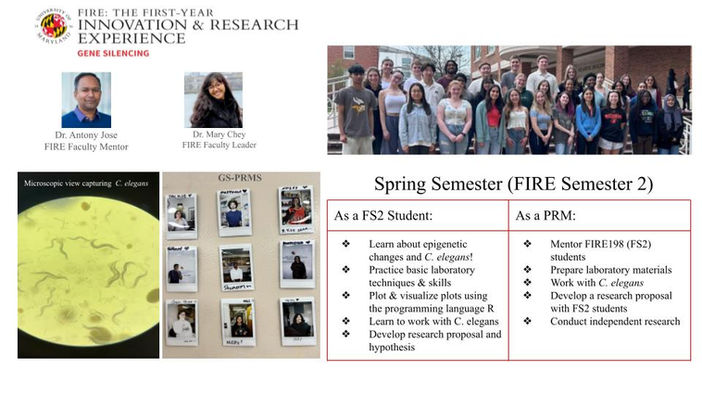
transgenerational effects, gene silencing, molecular biology, genetics, computational modeling, programming
WHAT WE DO
Key Points:
-
Investigate features of a gene that make it susceptible or resistant to transgenerational silencing.
-
Predict the duration of gene silencing across generations using simulations and test the predictions experimentally.
Detailed Description:
The environment can impact gene expression without mutations in DNA. Such epigenetic changes can be transmitted to the next generation in mammals, plants, and other systems.
This stream provides a deeper understanding for how RNA interference can trigger epigenetic changes by studying the resulting gene silencing across generations. It will use both experimental approaches in the nematode C. elegans and computational modeling with NetLogo to investigate what features of a gene promote or inhibit the memory of an epigenetic change across generations.
WHY IT MATTERS
Key Points:
-
Reducing the expression of genes using RNA interference can be effective for treating many diseases.
-
Analyzing what features of a gene promote RNA interference across generations can improve RNA-based therapies.
-
Stable gene-specific changes are epigenetic memories that reveal how heredity can change without altering DNA.
Detailed Description:
Double-stranded RNA (dsRNA) can trigger the specific silencing of any gene of matching sequence. This process is called RNA interference. Such dsRNA drugs are already used to treat multiple diseases that affect liver function. One challenge for this therapeutic approach is to get efficient gene silencing using the dsRNA.
By studying how the features of a gene can affect the efficiency of silencing, this stream will contribute to the development of the next generation of dsRNA-based drugs. Long-term gene silencing that lasts for many generations also provides fundamental insights into how information other than DNA sequence is transmitted from one generation to the next in all organisms.
WHAT YOU LEARN
Key Points:
-
Learn basic techniques in molecular genetics such as PCR, genome editing using CRISPR, and genetic analysis.
-
Learn to generate and analyze computational models using NetLogo, a platform for modeling, and the R programming language for data analysis and visualization.
-
Learn to analyze primary research articles, to collaborate in teams, and to present at scientific meetings.
Detailed Description:
Students will gain experience in the two complementary components of this stream – experimental and computational.
Experimental work will expose students to cutting-edge approaches for genome editing to design and test genes with different sequence contexts. Hands-on experience will include PCR, gel electrophoresis, microscopy, C. elegans biology, phenotyping and genotyping, and genetic crosses.
Computational work will train students in the basics of programming using the NetLogo software and R programming language. Students will learn coding with the goal of designing regulatory architectures that they can use to predict the outcome of experimentally creating genes with different sequence contexts.








